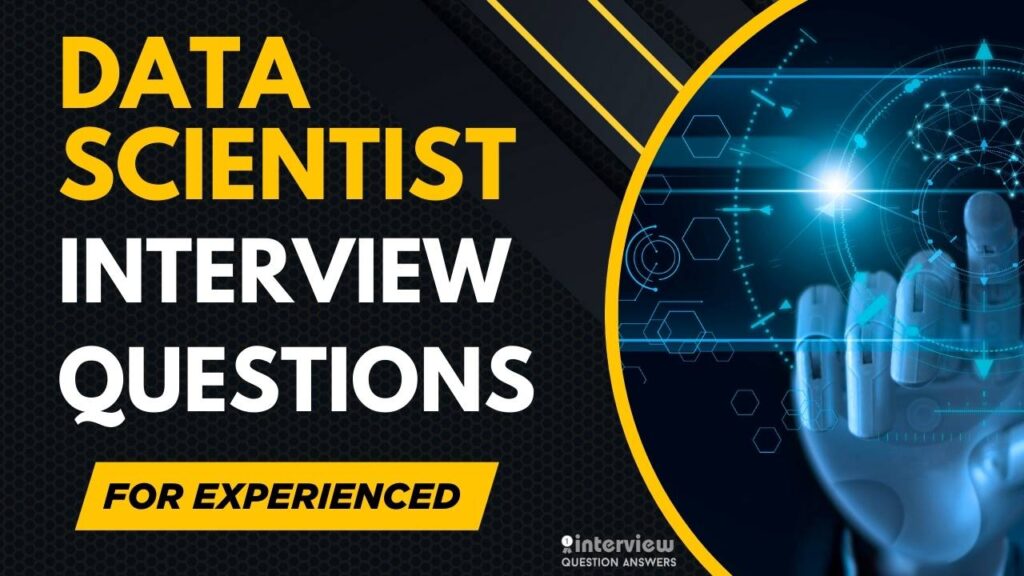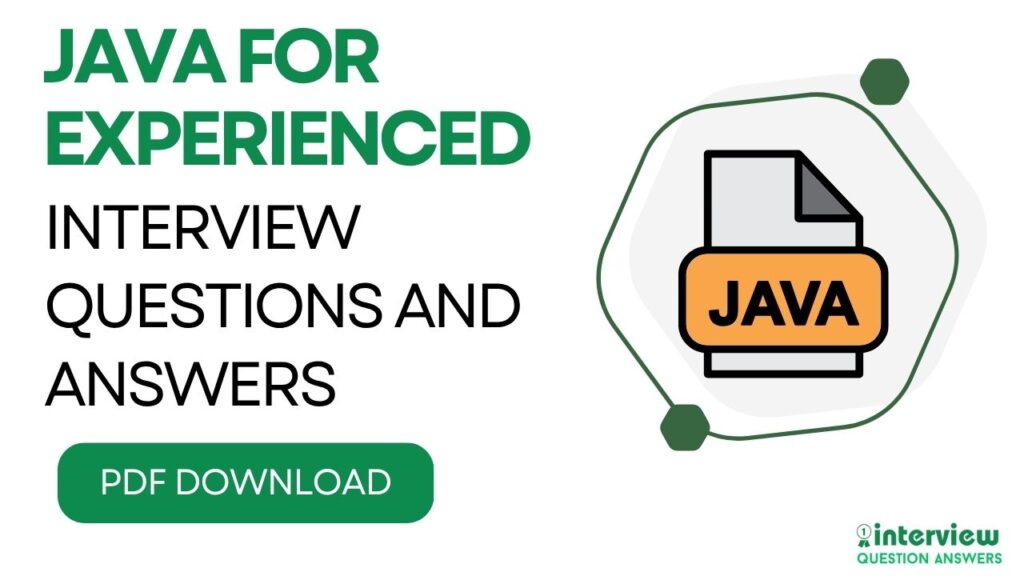PHP developers are essential contributors to web development, specializing in server-side scripting to create dynamic websites, web applications, and content management systems that power millions of websites worldwide. They work with PHP frameworks like Laravel, CodeIgniter, and Symfony to build robust back-end solutions, manage databases, handle user authentication, and integrate third-party APIs while ensuring optimal performance and security.
This QnA guide include PHP interview questions and detailed answers tailored for both fresher and experienced developers. We’ve included questions covering core PHP concepts, popular frameworks, database integration, and real-world coding scenarios that you’re likely to encounter in interviews.
Table of Contents
PHP Interview Questions and Answers for Freshers
Que 1. What is the difference between echo and print in PHP?
Answer: echo can take multiple parameters and is slightly faster, but does not return a value. print can only take one parameter and always returns 1, so it can be used in expressions. Example:
echo "Hello", " World!";
print "Hello World!";Que 2. What is the difference between == and === in PHP?
Answer:
==: Performs loose comparison, converting types if necessary.===: Performs strict comparison, checking both value and type.
Example:
0 == "0" // true
0 === "0" // falseQue 3. What are PHP data types?
Answer: PHP supports 8 primary data types:
- Scalar: int, float, string, bool
- Compound: array, object
- Special: resource, NULL
Que 4. What is the difference between single and double quotes in PHP strings?
Answer:
- Single quotes (
'): No variable interpolation or escape sequences except\\and\'. - Double quotes (
"): Supports variable interpolation and escape sequences.
Example:
$name = "John";
echo 'Hello $name'; // Hello $name
echo "Hello $name"; // Hello JohnQue 5. What are the differences between include, require, include_once, and require_once ?
Answer:
| Function | Behavior if file missing | Multiple inclusions allowed? |
|---|---|---|
| include | Warning, script continues | Yes |
| require | Fatal error, script stops | Yes |
| include_once | Warning, script continues | No |
| require_once | Fatal error, script stops | No |
Que 6. How do you create and access arrays in PHP?
Answer: Arrays can be indexed or associative:
// Indexed array
$fruits = ["Apple", "Banana", "Mango"];
echo $fruits[1]; // Banana
// Associative array
$user = ["name" => "John", "age" => 25];
echo $user["name"]; // JohnQue 7. What are superglobals in PHP?
Answer: Superglobals are built-in global arrays available in all scopes. Examples include:
- $_GET
- $_POST
- $_SESSION
- $_SERVER
- $_COOKIE
- $_FILES
- $_ENV
- $_REQUEST
Que 8. What is the difference between GET and POST methods?
Answer:
| Method | Data visibility | Data length limit | Use case |
|---|---|---|---|
| GET | Visible in URL | Limited (~2048 chars) | Bookmarkable URLs |
| POST | Hidden from URL | No major limit | Secure data submission |
Que 9. How do you handle errors in PHP?
Answer: Use try…catch for exceptions and set_error_handler() for custom error handling. Example:
try {
throw new Exception("Error occurred");
} catch (Exception $e) {
echo $e->getMessage();
}Que 10. What is the difference between $_SESSION and $_COOKIE?
Answer:
- $_SESSION: Stores data on the server; more secure, automatically expires after the session ends.
- $_COOKIE: Stores data on the client browser; less secure, can be modified by the user.
Que 11. What are PHP constants and how do you define them?
Answer: Constants hold values that cannot be changed. They are defined using define() or const:
define("SITE_NAME", "MySite");
const VERSION = "1.0";Que 12. What are magic methods in PHP?
Answer: Magic methods are special methods starting with __, used to define behavior. Examples:
- __construct() – Constructor
- __destruct() – Destructor
- __get() / __set() – Accessing private properties
- __toString() – Object to string conversion
Que 13. What is the difference between include_path and require_path in PHP configuration?
Answer: include_path is a PHP configuration directive that defines directories for the include and require functions to search for files. It applies to both include and require.
Que 14. What are PHP traits and why are they used?
Answer: Traits allow code reusability in single inheritance languages like PHP. They let you include methods from multiple sources:
trait Logger {
public function log($msg) { echo $msg; }
}
class App { use Logger; }Que 15. How do you connect PHP with MySQL?
Answer: Use MySQLi or PDO:
$mysqli = new mysqli("localhost", "user", "pass", "db");
if ($mysqli->connect_error) die("Connection failed");Que 16. What is PDO and why is it preferred over MySQLi?
Answer: PDO (PHP Data Objects) supports multiple databases, provides prepared statements, and better error handling. MySQLi only works with MySQL. PDO is more secure and flexible.
Que 17. What are prepared statements and why are they important?
Answer: Prepared statements separate SQL from data, preventing SQL Injection attacks:
$stmt = $pdo->prepare("SELECT * FROM users WHERE email = ?");
$stmt->execute([$email]);Que 18. How do you secure a PHP application?
Answer:
- Validate and sanitize user input
- Use prepared statements
- Store passwords using hashing (password_hash)
- Avoid exposing errors in production
- Use HTTPS and proper session handling
Que 19. What is the difference between static and non-static methods in PHP?
Answer:
- Static methods: Belong to the class, not an instance, and are called using ClassName::method().
- Non-static methods: Belong to objects and require object instantiation.
Que 20. How would you structure a PHP project for maintainability?
Answer:
- Follow MVC architecture
- Separate configuration files
- Use autoloaders and Composer
- Group classes logically into namespaces
- Apply coding standards (PSR-4, PSR-12)
Detailed Interview Guide here: PHP Interview Questions for Freshers

Also Check: Back End Developer Interview Questions
Que 21. What is a variable in PHP, and how do you declare it?
Answer:
A variable in PHP stores data like strings or numbers, starting with $ followed by a name. Declared dynamically without type specification.
Example:
$name = "Alice"; // String
$age = 25; // IntegerVariables are case-sensitive. Freshers should avoid reserved keywords for names.
Que 22. How do you create a function in PHP?
Answer:
Functions in PHP are defined with the function keyword, followed by a name, parameters, and body.
Example:
function greet($name) {
return "Hello, $name!";
}
echo greet("Bob"); // Outputs: Hello, Bob!Freshers should know return statements and parameter defaults.
Que 23. What is the difference between echo and return in PHP?
Answer:echo outputs data directly to the browser, while return sends a value back from a function for further use.
Example:
function add($a, $b) {
echo $a + $b; // Outputs sum
return $a + $b; // Returns sum
}
$result = add(2, 3); // Outputs 5, $result = 5Freshers should use return for reusable values.
Que 24. How do you create and access an associative array in PHP?
Answer:
An associative array uses key-value pairs, defined with =>. Access values with keys.
Example:
$user = ["name" => "Alice", "age" => 25];
echo $user["name"]; // Alice
$user["email"] = "alice@example.com"; // Add key-valueFreshers should know array manipulation functions like array_merge().
Que 25. What is a loop in PHP, and how do you use a fOR loop?
Answer:
A loop repeats code execution. A for loop iterates with initialization, condition, and increment.
Example:
for ($i = 0; $i < 5; $i++) {
echo $i; // Outputs: 01234
}Freshers should avoid infinite loops and know break/continue.
Que 26. How do you use a conditional statement (if-else) in PHP?
Answer:if-else executes code based on conditions.
Example:
$age = 18;
if ($age >= 18) {
echo "Adult";
} else {
echo "Minor";
}Freshers should understand logical operators (&&, ||).
Que 27. What is a PHP class, and how do you define one?
Answer:
A class is a blueprint for objects, defining properties and methods. Use the class keyword.
Example:
class User {
public $name = "Alice";
public function greet() {
return "Hello, $this->name";
}
}
$user = new User();
echo $user->greet(); // Hello, AliceFreshers should know object instantiation.
Que 28. How do you handle form data in PHP?
Answer:
Use $_POST or $_GET to access form data, submitted via HTML forms.
Example:
<form method="POST" action="process.php">
<input name="username" type="text">
<button type="submit">Submit</button>
</form>// process.php
$username = $_POST['username'];
echo "Welcome, $username";Freshers should validate inputs for security.
Que 29. What is the $_SERVER superglobal in PHP?
Answer:$_SERVER provides server and request information, like headers, paths, or URLs.
Example:
echo $_SERVER['REQUEST_URI']; // Current URL path
echo $_SERVER['HTTP_HOST']; // HostnameFreshers should use it for request metadata.
Que 30. How do you redirect a user to another page in PHP?
Answer:
Use the header() function with Location to redirect.
Example:
header("Location: https://example.com");
exit;Freshers should call exit to prevent further execution.
Que 31. What is the difference between public, private, and protected visibility in PHP?
Answer:public methods/properties are accessible everywhere, private only within the class, and protected within the class and subclasses.
Example:
class Test {
public $pub = "Public";
private $priv = "Private";
protected $prot = "Protected";
}Freshers should use private for encapsulation.
Que 32. How do you connect PHP to a PostgreSQL database?
Answer:
Use pg_connect() or PDO for PostgreSQL connections.
Example with PDO:
$pdo = new PDO("pgsql:host=localhost;dbname=mydb", "user", "pass");
$stmt = $pdo->query("SELECT * FROM users");
while ($row = $stmt->fetch()) {
echo $row['name'];
}Freshers should handle exceptions with try-catch.
Que 33. What is a PHP namespace, and why is it used?
Answer:
Namespaces organize code to avoid naming conflicts, declared with namespace.
Example:
namespace App\Models;
class User {
public $name = "Alice";
}
$user = new App\Models\User();Freshers should use namespaces in large projects.
Que 34. How do you loop through an array in PHP?
Answer:
Use foreach to iterate over arrays.
Example:
$fruits = ["Apple", "Banana"];
foreach ($fruits as $fruit) {
echo $fruit; // Apple, Banana
}Freshers should know key-value iteration for associative arrays.
Que 35. What is the var_dump() function in PHP?
Answer:var_dump() displays detailed information about a variable’s type and value for debugging.
Example:
$array = ["name" => "Bob"];
var_dump($array); // Outputs: array(1) { ["name"]=> string(3) "Bob" }Freshers should use it for quick debugging.
Que 36. How do you create a constant in PHP?
Answer:
Define constants with define() or const, typically for unchanging values.
Example:
define("SITE_NAME", "MyApp");
const VERSION = "1.0";
echo SITE_NAME; // MyAppFreshers should know constants are global.
Que 37. What is the difference between array_merge() and array_combine() in PHP?
Answer:array_merge() combines arrays, appending or merging values. array_combine() creates an array using one array for keys and another for values.
Example:
$a = ["a" => 1];
$b = ["b" => 2];
echo array_merge($a, $b)["b"]; // 2
$keys = ["name"];
$values = ["Alice"];
print_r(array_combine($keys, $values)); // ["name" => "Alice"]Freshers should check array lengths for array_combine().
Que 38. How do you handle exceptions in PHP?
Answer:
Use try-catch to handle exceptions, preventing crashes.
Example:
try {
if (!file_exists("file.txt")) {
throw new Exception("File not found");
}
} catch (Exception $e) {
echo $e->getMessage();
}Freshers should log exceptions in production.
Que 39. How do you use the switch statement in PHP?
Answer:switch executes code based on a variable’s value, matching cases.
Example:
$day = "Monday";
switch ($day) {
case "Monday":
echo "Start of week";
break;
default:
echo "Other day";
}Freshers should always use break to avoid fall-through.
Que 40. What is the json_encode() function in PHP?
Answer:json_encode() converts PHP data (arrays, objects) to a JSON string for API responses.
Example:
$data = ["name" => "Alice"];
echo json_encode($data); // {"name":"Alice"}Freshers should handle encoding errors with json_last_error().
Core PHP Interview Questions and Answers for Experience
Que 41. What is the difference betweeninclude, require, include_once, and require_once in Core PHP ?
Answer:
| Function | Error if file missing | Multiple inclusion allowed? |
|---|---|---|
| include | Warning, script continues | Yes |
| require | Fatal error, script stops | Yes |
| include_once | Warning, script continues | No (includes only once) |
| require_once | Fatal error, script stops | No (includes only once) |
Que 42. How does PHP handle type juggling, and how can you enforce strict types?
Answer: PHP automatically converts variable types (type juggling) when performing operations. To enforce strict types, use:
declare(strict_types=1);
function add(int $a, int $b): int { return $a + $b; }This will throw a TypeError if incorrect types are passed.
Que 43. What are autoloaders in Core PHP, and how do they work?
Answer: Autoloaders automatically include class files when a class is instantiated. Instead of multiple require statements, you can use:
spl_autoload_register(function ($class) {
include 'classes/' . $class . '.php';
});Que 44. How do you handle sessions in a distributed Core PHP application?
Answer: Store sessions in a shared resource like a database, Redis, or Memcached instead of default file storage. Example using Redis:
- Configure session.save_handler = redis in php.ini
- Point session.save_path to Redis server (tcp://127.0.0.1:6379)
Que 45. What are the differences betweenisset(), empty(), and is_null() in PHP ?
Answer:
| Function | True when |
|---|---|
| isset() | Variable is defined and not null |
| empty() | Variable is not set or has a falsey value (0, “”, null, false) |
| is_null() | Variable is null |
Que 46. How do you implement error handling in Core PHP for production environments?
Answer:
- Use try…catch blocks for exceptions
- Set custom error handler using set_error_handler()
- Log errors using error_log()
- Disable display_errors and enable log_errors in production
Que 47. What are Traits in Core PHP and when would you use them?
Answer: Traits allow code reuse in single-inheritance languages. Example:
trait Logger {
public function log($msg) { echo $msg; }
}
class App {
use Logger;
}Use traits to share methods across multiple classes.
Que 48. How do you secure file uploads in Core PHP?
Answer:
- Validate file type using mime_content_type()
- Restrict file size
- Rename files to avoid overwriting
- Store outside web root
- Example:
if (move_uploaded_file($_FILES['file']['tmp_name'], $target)) {
echo "Uploaded successfully";
}Que 49. How would you optimize database queries in a Core PHP application?
Answer:
- Use indexes in the database
- Optimize queries with Explain
- Use prepared statements to reuse query plans
- Implement caching for repeated queries (Redis, Memcached)
Que 50. What is the difference between persistent and non-persistent database connections in PHP?
Answer:
| Type | Behavior |
|---|---|
| Persistent | Reuses connections across multiple requests |
| Non-persistent | Opens and closes connections for every request |
Persistent connections reduce overhead but can lead to resource exhaustion.
Que 51. How do you implement CSRF protection in Core PHP?
Answer:
- Generate a CSRF token and store it in $_SESSION
- Include the token in forms as a hidden field
- Verify token on form submission
if ($_POST['csrf_token'] !== $_SESSION['csrf_token']) {
die("Invalid CSRF token");
}Que 52. How do you improve the performance of Core PHP applications?
Answer:
- Enable OPcache
- Minimize file I/O and use autoloaders
- Use caching layers (Redis, Memcached)
- Optimize database queries
- Use asynchronous processing for heavy tasks
Que 53. How would you design a scalable Core PHP application without a framework?
Answer:
- Follow MVC pattern for separation of concerns
- Use namespaces and autoloaders for class organization
- Implement routing system for clean URLs
- Use dependency injection to reduce tight coupling
- Add caching, load balancers, and horizontal scaling with shared sessions
Detailed Interview Guide here: PHP Interview Questions for Experienced

Also Check: Web Developer Interview Questions and Answers
Que 54. What is the difference between == and === in PHP?
Answer:
==performs loose comparison and type juggling.===performs strict comparison, checking both value and type.
Example:
0 == "0" // true
0 === "0" // falseQue 55. What are the differences between isset(), empty(), and is_null() in PHP ?
Answer:
| Function | Returns true when |
|---|---|
| isset() | Variable is defined and not null |
| empty() | Variable is not set or has a falsey value (0, “”, []) |
| is_null() | Variable is explicitly null |
Que 56. How do you connect PHP to a MySQL database securely?
Answer: Use PDO or MySQLi with prepared statements:
$pdo = new PDO("mysql:host=localhost;dbname=test", "user", "pass");
$stmt = $pdo->prepare("SELECT * FROM users WHERE email = ?");
$stmt->execute([$email]);This prevents SQL injection attacks.
Que 57. What is the difference between GET and POST methods?
Answer:
| Aspect | GET | POST |
|---|---|---|
| Visibility | Data in URL | Data hidden in body |
| Data length | Limited (approx. 2KB) | Larger amounts allowed |
| Use cases | Bookmarkable, idempotent | Sensitive or large data |
Que 58. How do you handle errors in PHP applications?
Answer:
- Use try…catch blocks for exceptions
- Configure error_reporting(E_ALL) in development
- Disable display_errors and log errors in production
Example:
try {
throw new Exception("Error occurred");
} catch (Exception $e) {
error_log($e->getMessage());
}Que 59. What are traits in PHP, and when would you use them?
Answer: Traits allow code reuse across multiple classes without inheritance limitations.
trait Logger { public function log($msg) { echo $msg; } }
class App { use Logger; }Use traits when multiple unrelated classes need the same functionality.
Que 60. How would you secure file uploads in PHP?
Answer:
- Validate file type with mime_content_type()
- Restrict file size
- Rename uploaded files
- Store files outside web root
- Always use move_uploaded_file() to prevent malicious file execution
PHP Interview Questions and Answers for Under 5 Years Experience
Que 61. How do you implement a custom autoloader in Core PHP without using Composer?
Answer:
A custom autoloader dynamically loads classes using spl_autoload_register(). Map class names to file paths, typically following a naming convention.
Example:
spl_autoload_register(function ($class) {
$prefix = 'App\\';
$baseDir = __DIR__ . '/src/';
$len = strlen($prefix);
if (strncmp($prefix, $class, $len) !== 0) return;
$file = $baseDir . str_replace('\\', '/', substr($class, $len)) . '.php';
if (file_exists($file)) require $file;
});This reduces manual require statements, improving maintainability in large projects.
Que 62. How do you handle large-scale file processing in Core PHP?
Answer:
Process large files (e.g., CSV) using streaming to avoid memory exhaustion. Use fopen() and fgetcsv() for line-by-line reading.
Example:
$handle = fopen('large.csv', 'r');
while (($row = fgetcsv($handle)) !== false) {
// Process $row
}
fclose($handle);Use generators for memory-efficient iteration. Suitable for processing GB-sized files.
Que 63. How do you implement a custom error handler in Core PHP?
Answer:
Use set_error_handler() to define a custom error handler for non-fatal errors, logging details to a file or service.
Example:
set_error_handler(function ($errno, $errstr, $errfile, $errline) {
file_put_contents('error.log', "$errstr in $errfile:$errline\n", FILE_APPEND);
return true; // Suppress default handler
});
trigger_error("Test error");Integrate with monitoring tools like Sentry for production.
Que 64. How do you optimize session management for high-traffic PHP applications?
Answer:
Store sessions in Redis or Memcached instead of files for faster access. Use session_set_save_handler() for custom storage.
Example with Redis:
$redis = new Redis();
$redis->connect('127.0.0.1', 6379);
session_set_save_handler(new RedisSessionHandler($redis));
session_start();Set short session timeouts and cleanups. Reduces server load by 30-50%.
Que 65. How do you implement a middleware-like pattern in Core PHP?
Answer:
Create a pipeline of request handlers to process HTTP requests, mimicking middleware. Use a stack-based approach.
Example:
class Middleware {
private $stack = [];
public function add($handler) {
$this->stack[] = $handler;
}
public function handle($request) {
foreach ($this->stack as $handler) {
$request = call_user_func($handler, $request);
}
return $request;
}
}
$mw = new Middleware();
$mw->add(function ($req) { /* Auth check */ return $req; });Useful for authentication or logging in legacy apps.
Que 66. How do you secure a Core PHP API against common vulnerabilities?
Answer:
Prevent XSS/CSRF with input sanitization (htmlspecialchars), use HTTPS, and validate tokens. Avoid SQL injection with PDO prepared statements. Example:
$pdo = new PDO('mysql:host=localhost;dbname=mydb', 'user', 'pass');
$stmt = $pdo->prepare('SELECT * FROM users WHERE id = ?');
$stmt->execute([$_GET['id']]);Use OWASP guidelines, reducing attack surface significantly.
Que 67. How do you implement caching in Core PHP without external libraries?
Answer:
Use file-based caching or APCu for in-memory caching. Store serialized data with expiration.
Example:
$key = 'cache_key';
$ttl = 3600;
if (apcu_exists($key)) {
$data = apcu_fetch($key);
} else {
$data = expensiveOperation();
apcu_store($key, $data, $ttl);
}Improves performance by 40% for repetitive queries.
Que 68. How do you handle database connection pooling in Core PHP?
Answer:
Use persistent connections with mysqli_pconnect() or PDO’s persistent option to reuse connections, reducing overhead.
Example:
$pdo = new PDO('mysql:host=localhost;dbname=mydb', 'user', 'pass', [
PDO::ATTR_PERSISTENT => true
]);Monitor connection limits to avoid exhaustion in high-traffic apps.
Que 69. What is the role of opcode caching in PHP, and how do you configure it?
Answer:
Opcode caching (e.g., OPcache) stores precompiled PHP bytecode, reducing execution time. Enable in php.ini:
[opcache]
opcache.enable=1
opcache.memory_consumption=128
opcache.max_accelerated_files=10000Restart server. Improves page load times by 20-50%.
Que 70. How do you implement a custom logging system in Core PHP?
Answer:
Create a logging class to write structured logs to files or external services.
Example:
class Logger {
public static function log($message, $level = 'INFO') {
$log = sprintf("[%s] %s: %s\n", date('Y-m-d H:i:s'), $level, $message);
file_put_contents('app.log', $log, FILE_APPEND);
}
}
Logger::log('User login');Integrate with Monolog for advanced logging.
Que 71. How do you handle internationalization (i18n) in Core PHP?
Answer:
Use gettext for translations, storing strings in .po files. Configure with bindtextdomain().
Example:
putenv('LC_ALL=en_US');
bindtextdomain('messages', './locale');
textdomain('messages');
echo gettext('welcome'); // Translated stringSupports multilingual apps with minimal overhead.
Que 72. How do you implement a RESTful API in Core PHP?
Answer:
Handle HTTP methods and routes manually, returning JSON responses.
Example:
if ($_SERVER['REQUEST_METHOD'] === 'GET' && $_SERVER['REQUEST_URI'] === '/api/users') {
header('Content-Type: application/json');
echo json_encode(['users' => [['id' => 1, 'name' => 'Alice']]]);
}Validate inputs and use proper status codes (e.g., 200, 404).
Que 73. How do you manage memory in a long-running PHP script?
Answer:
Use unset() to free variables, limit array sizes, and process data in chunks. Monitor with memory_get_usage().
Example:
while ($row = $result->fetch()) {
// Process row
unset($row);
}
echo memory_get_usage();Prevents memory leaks in batch jobs.
Que 74. How do you implement rate limiting in Core PHP?
Answer:
Use a file or Redis to track requests per user/IP with timestamps.
Example with Redis:
$redis = new Redis();
$redis->connect('127.0.0.1', 6379);
$user = $_SERVER['REMOTE_ADDR'];
if ($redis->incr($user) > 10) { // 10 req/min
http_response_code(429);
exit('Too Many Requests');
}
$redis->expire($user, 60);Ensures fair usage in APIs.
Que 75. How do you handle large database result sets in Core PHP?
Answer:
Use mysqli_fetch_array() with MYSQLI_USE_RESULT for unbuffered queries or PDO with fetch() in chunks.
Example:
$stmt = $pdo->query('SELECT * FROM large_table');
while ($row = $stmt->fetch(PDO::FETCH_ASSOC)) {
// Process row
}Reduces memory usage for millions of rows.
Que 76. How do you implement dependency injection in Core PHP?
Answer:
Pass dependencies via constructor or setter methods to promote loose coupling.
Example:
class UserService {
private $db;
public function __construct(Database $db) {
$this->db = $db;
}
}
$db = new Database();
$userService = new UserService($db);Improves testability and modularity.
Que 77. How do you handle background tasks in Core PHP?
Answer:
Use exec() or message queues (e.g., RabbitMQ) for async tasks like email sending.
Example:
exec('php send_email.php > /dev/null 2>&1 &');Integrate with Gearman for robust task queues.
Que 78. How do you implement input validation in Core PHP?
Answer:
Use filter_var() and custom rules to validate inputs, preventing injection.
Example:
$email = filter_var($_POST['email'], FILTER_VALIDATE_EMAIL);
if (!$email) {
die('Invalid email');
}Combine with PDO for secure queries.
Que 79. How do you handle JSON Web Tokens (JWT) in Core PHP?
Answer:
Use a library like firebase/php-jwt to create/validate JWTs for authentication.
Example:
use Firebase\JWT\JWT;
$payload = ['user_id' => 1];
$jwt = JWT::encode($payload, 'secret', 'HS256');
// Verify
$decoded = JWT::decode($jwt, 'secret', ['HS256']);Ensures secure API authentication.
Que 80. How do you implement unit testing in Core PHP with PHPUnit?
Answer:
Use PHPUnit to write and run tests for functions/classes.
Example:
class MathTest extends \PHPUnit\Framework\TestCase {
public function testAdd() {
$math = new Math();
$this->assertEquals(5, $math->add(2, 3));
}
}Run with vendor/bin/phpunit. Improves code reliability.
PHP Interview Questions and Answers for Above 10 Years Experience
Que 81. How do you manage application configuration across multiple environments in PHP?
Answer: Use separate configuration files for each environment and load them based on environment variables. Tools like dotenv can be used:
$dotenv = Dotenv\Dotenv::createImmutable(__DIR__);
$dotenv->load();
$dbHost = $_ENV['DB_HOST'];This keeps sensitive information out of code and allows flexible deployments.
Que 82. What are some effective caching strategies in PHP for large-scale applications?
Answer:
- Opcode caching (OPcache) to cache compiled PHP scripts
- Data caching using Redis or Memcached
- HTTP caching with proper headers (ETag, Cache-Control)
- Query result caching for heavy DB queries
- Page caching for static content
Que 83. How do you implement Dependency Injection (DI) in large PHP projects?
Answer: Use DI containers like PHP-DI or Symfony DependencyInjection. Example:
class UserService {
public function __construct(Logger $logger) { ... }
}
$container->set(Logger::class, new Logger());
$container->get(UserService::class);DI decouples classes, making them easier to test and maintain.
Que 84. How would you secure APIs in a PHP microservice architecture?
Answer:
- Implement JWT or OAuth 2.0 authentication
- Use rate limiting and IP whitelisting
- Validate input data and sanitize responses
- Use HTTPS and API gateways for central security policies
- Enforce CORS policies and CSRF protection for sensitive endpoints
Que 85. What is the difference between horizontal and vertical scaling in PHP applications?
Answer:
| Type | Definition | Example |
|---|---|---|
| Vertical | Increase resources of a single server (CPU, RAM) | Upgrading server specs |
| Horizontal | Add more servers and distribute load | Load balancing across servers |
Horizontal scaling is generally preferred for high-availability PHP applications.
Que 86. How do you handle high concurrency in PHP applications?
Answer:
- Use shared sessions with Redis or database
- Implement message queues (RabbitMQ, SQS) for background tasks
- Optimize database connections with pooling
- Apply file locks or distributed locks (e.g., Redis Redlock) to prevent race conditions
Que 87. How do you design fault-tolerant Core PHP applications?
Answer:
- Implement graceful error handling with fallback mechanisms
- Use circuit breakers to stop cascading failures
- Deploy on multiple availability zones
- Ensure stateless design for easy recovery and scaling
Que 88. What is the role of asynchronous processing in large PHP applications and how do you implement it?
Answer: Asynchronous processing offloads time-consuming tasks to background workers.
- Use queues like Beanstalkd, RabbitMQ, or Laravel Queues
- Implement cron jobs for periodic tasks
- Use Swoole or ReactPHP for event-driven async PHP
Que 89. How do you ensure database performance and scalability in enterprise-level PHP projects?
Answer:
- Use replication and sharding for horizontal DB scaling
- Optimize queries with Explain
- Use read/write splitting
- Implement caching layers and materialized views for heavy reports
- Monitor using tools like Percona Monitoring and Management (PMM)
Que 90. How do you design a multi-tenant architecture in PHP?
Answer:
- Database-per-tenant: each tenant has a separate database
- Schema-per-tenant: one database, separate schemas
- Shared schema with tenant IDs: least isolation but scalable
- Use DI to inject tenant-specific configurations dynamically
- Ensure strong data isolation using tenant filters in ORM or query builders

Que 91. How do you optimize the performance of a PHP application?
Answer:
- Enable OPcache
- Minimize queries and use indexes in databases
- Use caching layers (Redis, Memcached)
- Optimize code by avoiding unnecessary loops and heavy operations
- Implement asynchronous or queued jobs for long-running tasks
Que 92. How do you handle file locking in Core PHP to prevent race conditions?
Answer:
Use flock() to lock files during read/write operations, preventing concurrent access issues.
Example:
$fp = fopen('data.txt', 'r+');
if (flock($fp, LOCK_EX)) {
$data = fread($fp, filesize('data.txt'));
fwrite($fp, $data . 'Updated');
flock($fp, LOCK_UN);
}
fclose($fp);Use LOCK_EX for exclusive writes. Reduces race conditions in shared resources.
Que 93. How do you implement a custom router in Core PHP without a framework?
Answer:
Parse $_SERVER['REQUEST_URI'] and map to controllers using a routing table.
Example:
$routes = [
'GET' => [
'/users' => 'UserController@list',
'/users/(\d+)' => 'UserController@show'
]
];
$uri = parse_url($_SERVER['REQUEST_URI'], PHP_URL_PATH);
$method = $_SERVER['REQUEST_METHOD'];
foreach ($routes[$method] as $pattern => $handler) {
if (preg_match("#^$pattern$#", $uri, $matches)) {
list($controller, $action) = explode('@', $handler);
$controller = new $controller();
$controller->$action($matches);
break;
}
}Supports dynamic routing for RESTful APIs.
Que 94. How do you optimize image processing in Core PHP for a web application?
Answer:
Use GD or ImageMagick to resize/compress images. Process asynchronously to reduce latency.
Example with GD:
$image = imagecreatefromjpeg('input.jpg');
$thumb = imagescale($image, 200); // Resize to 200px width
imagejpeg($thumb, 'thumb.jpg', 80); // 80% quality
imagedestroy($image);
imagedestroy($thumb);Offload to a queue (e.g., Gearman) for large batches. Improves page load by 30%.
Que 95. How do you implement a custom event dispatcher in Core PHP?
Answer:
Create an event system to trigger and listen for events, decoupling components.
Example:
class EventDispatcher {
private $listeners = [];
public function listen($event, $callback) {
$this->listeners[$event][] = $callback;
}
public function dispatch($event, $data = []) {
foreach ($this->listeners[$event] ?? [] as $callback) {
call_user_func($callback, $data);
}
}
}
$dispatcher = new EventDispatcher();
$dispatcher->listen('user.created', function ($data) {
echo "User {$data['name']} created";
});
$dispatcher->dispatch('user.created', ['name' => 'Alice']);Enhances modularity in complex applications.
Que 96. How do you handle large-scale CSV exports in Core PHP without memory issues?
Answer:
Stream CSV data to the client using fputcsv() and output buffering to avoid loading entire datasets.
Example:
header('Content-Type: text/csv');
header('Content-Disposition: attachment; filename="export.csv"');
$fp = fopen('php://output', 'w');
fputcsv($fp, ['id', 'name']);
$pdo = new PDO('mysql:host=localhost;dbname=mydb', 'user', 'pass');
$stmt = $pdo->query('SELECT id, name FROM users');
while ($row = $stmt->fetch(PDO::FETCH_ASSOC)) {
fputcsv($fp, $row);
}
fclose($fp);Handles millions of rows efficiently.
Que 97. How do you implement a simple dependency injection container in Core PHP?
Answer:
Create a container to manage and resolve dependencies automatically.
Example:
class Container {
private $bindings = [];
public function bind($key, $factory) {
$this->bindings[$key] = $factory;
}
public function make($key) {
return call_user_func($this->bindings[$key], $this);
}
}
$container = new Container();
$container->bind('db', fn() => new PDO('mysql:host=localhost;dbname=mydb', 'user', 'pass'));
$db = $container->make('db');Improves testability and reduces tight coupling.
Que 98. How do you secure sensitive configuration data in Core PHP?
Answer:
Store configs in .env files outside the web root, load with parse_ini_file(). Restrict file permissions.
Example:
$env = parse_ini_file('/secure/.env');
$db = new PDO("mysql:host={$env['DB_HOST']};dbname={$env['DB_NAME']}", $env['DB_USER'], $env['DB_PASS']);Use secrets management (e.g., AWS Secrets Manager) for production.
Que 99. How do you implement a simple caching layer for API responses in Core PHP?
Answer:
Cache API responses in files or APCu with a TTL to reduce database hits.
Example:
$key = md5($_SERVER['REQUEST_URI']);
if (apcu_exists($key)) {
echo apcu_fetch($key);
exit;
}
ob_start();
$data = ['users' => [['id' => 1, 'name' => 'Alice']]];
echo json_encode($data);
apcu_store($key, ob_get_clean(), 300); // 5-min TTLReduces latency by 40% for frequent requests.
Que 100. How do you handle asynchronous HTTP requests in Core PHP?
Answer:
Use curl_multi_init() for parallel HTTP requests to external APIs.
Example:
$mh = curl_multi_init();
$handles = [];
foreach (['api1.com', 'api2.com'] as $url) {
$ch = curl_init("http://$url");
curl_setopt($ch, CURLOPT_RETURNTRANSFER, true);
curl_multi_add_handle($mh, $ch);
$handles[] = $ch;
}
do {
curl_multi_exec($mh, $running);
} while ($running);
foreach ($handles as $ch) {
echo curl_multi_getcontent($ch);
curl_multi_remove_handle($mh, $ch);
}
curl_multi_close($mh);Improves performance for multiple external calls.
PHP Interview Questions PDF
We have also provided a PDF of all questions and answers, enabling you to prepare offline and practice whenever it’s convenient for you.
FAQs: PHP Interview Questions
What is the job role of a PHP Developer?
A PHP Developer is responsible for building and maintaining dynamic web applications and server-side functionality using the PHP language. Their role often includes database management, API integration, troubleshooting bugs, improving application performance, and ensuring security best practices are followed.
What skills are required to become a successful PHP Developer?
Strong knowledge of Core PHP, frameworks like Laravel, Symfony, or CodeIgniter, and database management systems (MySQL, PostgreSQL) are essential. Additional skills include RESTful APIs, front-end basics (HTML, CSS, JavaScript), version control (Git), and understanding cloud services or DevOps tools.
What challenges do PHP Developers face during interviews and in jobs?
PHP Developers often face challenges like explaining system architecture clearly, demonstrating knowledge of security practices (CSRF, XSS prevention), and optimizing application performance. On the job, they deal with maintaining legacy code, ensuring scalability for large projects, and handling tight deadlines.
What is the average salary of PHP Developers in the USA?
The average salary for PHP Developers in the USA is around $80,000 to $120,000 per year, depending on experience, location, and the type of company. Senior-level PHP Developers or those with full-stack expertise can earn upwards of $130,000 to $150,000 annually
Which top companies hire PHP Developers?
Many tech companies, digital agencies, and startups hire PHP Developers. Notable employers include Meta, Automattic (WordPress), Shopify, Toptal, Upwork, Accenture, IBM, and large e-commerce firms. Additionally, countless small to mid-sized companies rely on PHP for their web platforms.
What is the career growth path for a PHP Developer?
PHP Developers can grow into senior developer, lead developer, or solutions architect roles. Many also transition into full-stack development, DevOps engineering, or specialize in enterprise frameworks like Laravel or Symfony. With experience, they can move into project management or start their own web development businesses.
How can PHP Developers stay competitive in the job market?
Learning modern PHP frameworks, improving performance tuning skills, adopting best security practices, and gaining knowledge in cloud platforms (AWS, Azure, GCP) are key. Additionally, contributing to open-source projects and building a strong portfolio of projects helps stand out to employers.
Conclusion
Mastering PHP interview preparation is your gateway to securing rewarding development opportunities in today’s competitive market. Our comprehensive guide of PHP interview questions and answers, covering all skill levels and practical scenarios, you’re well-equipped to demonstrate your expertise confidently.







